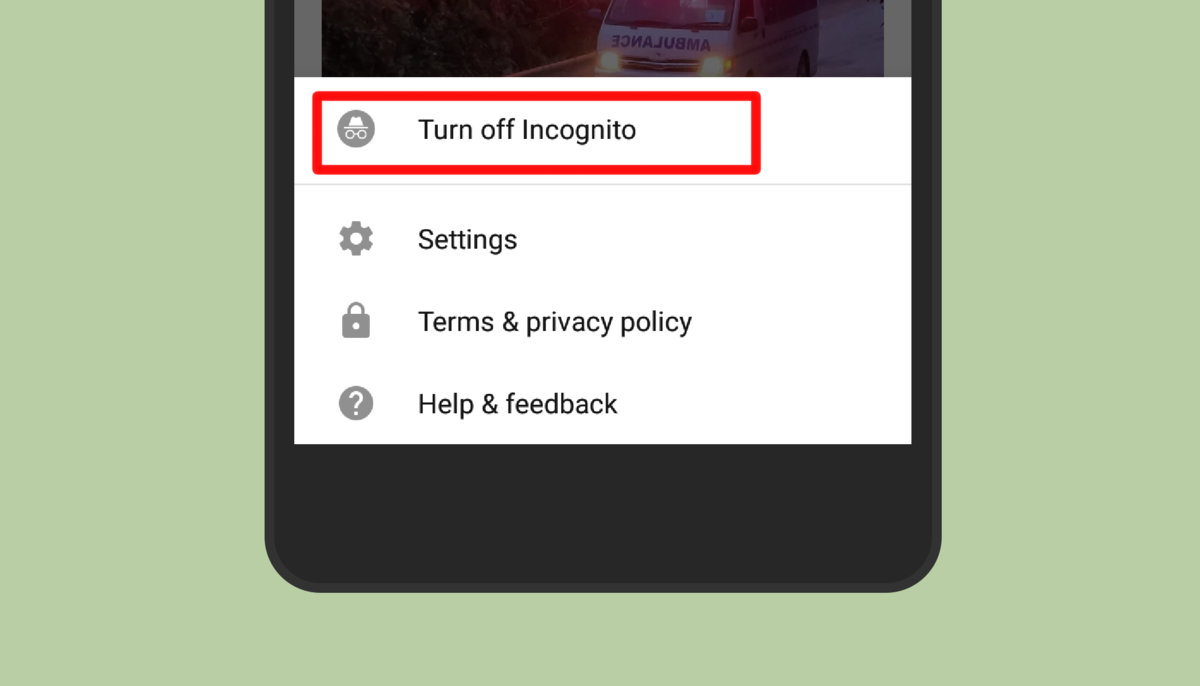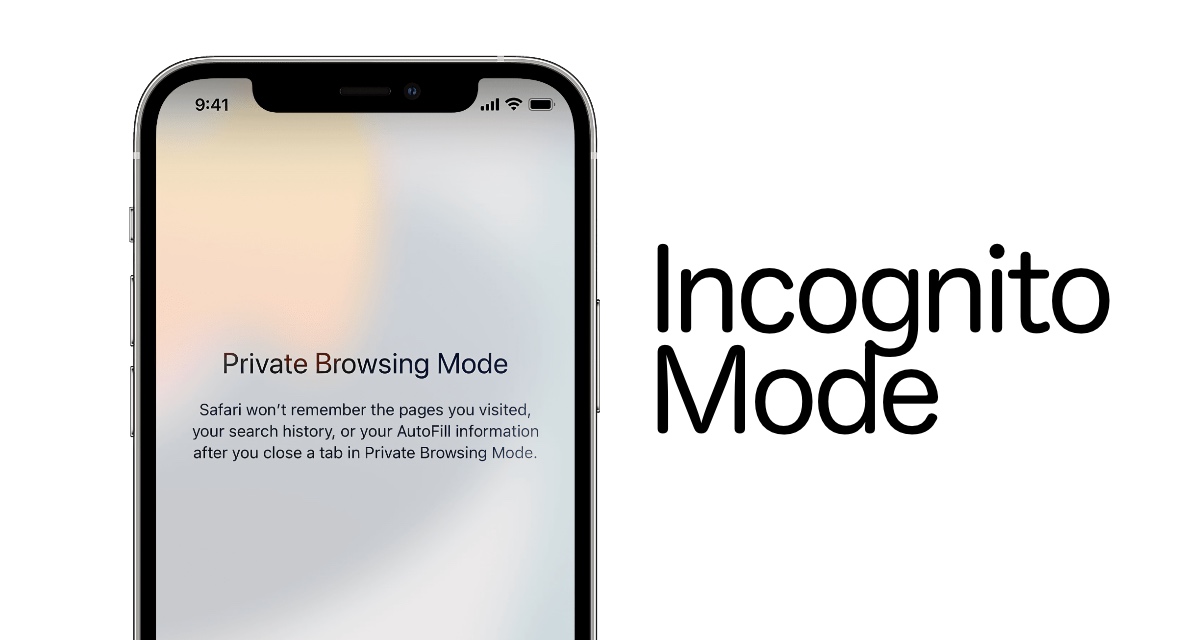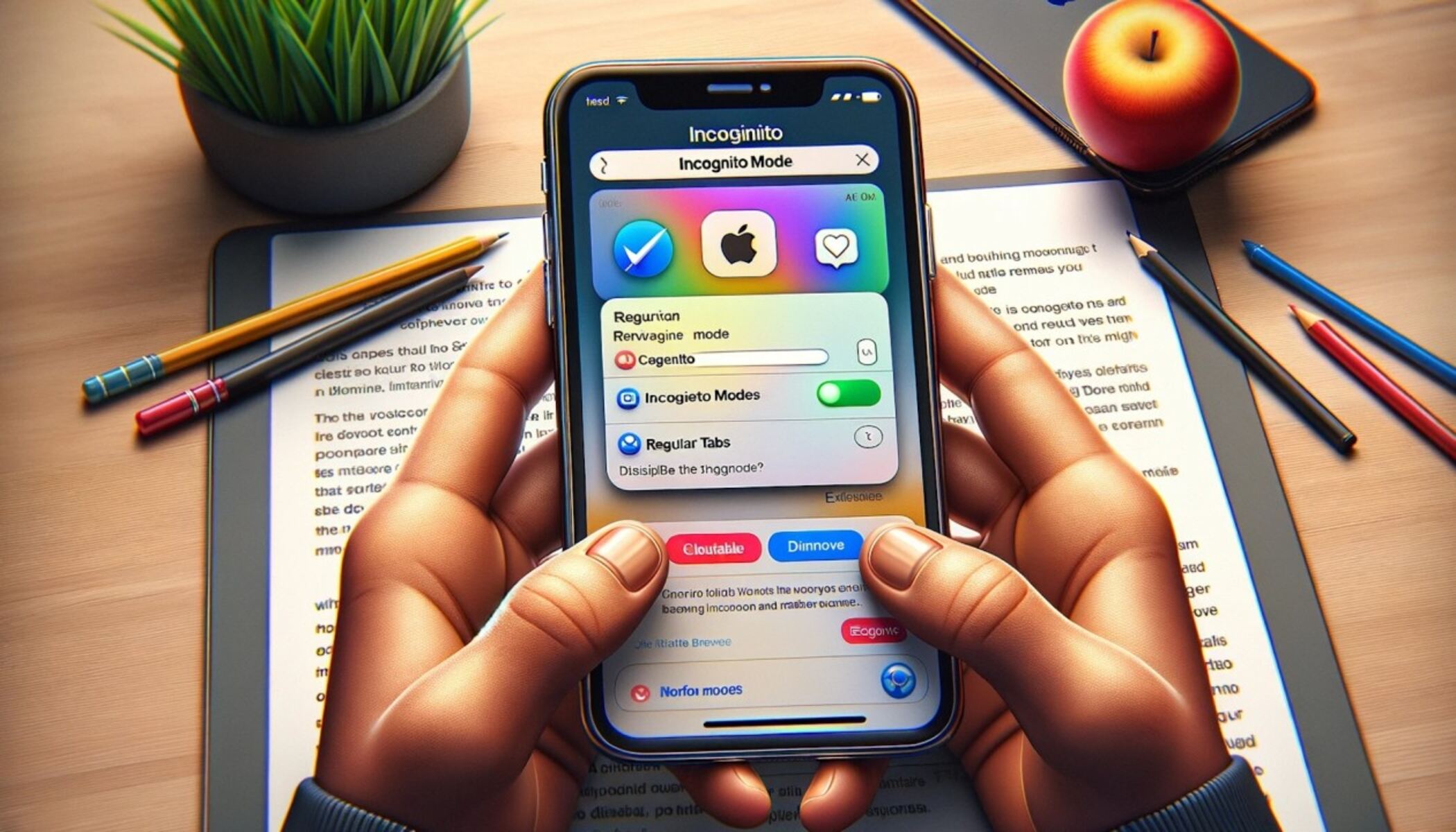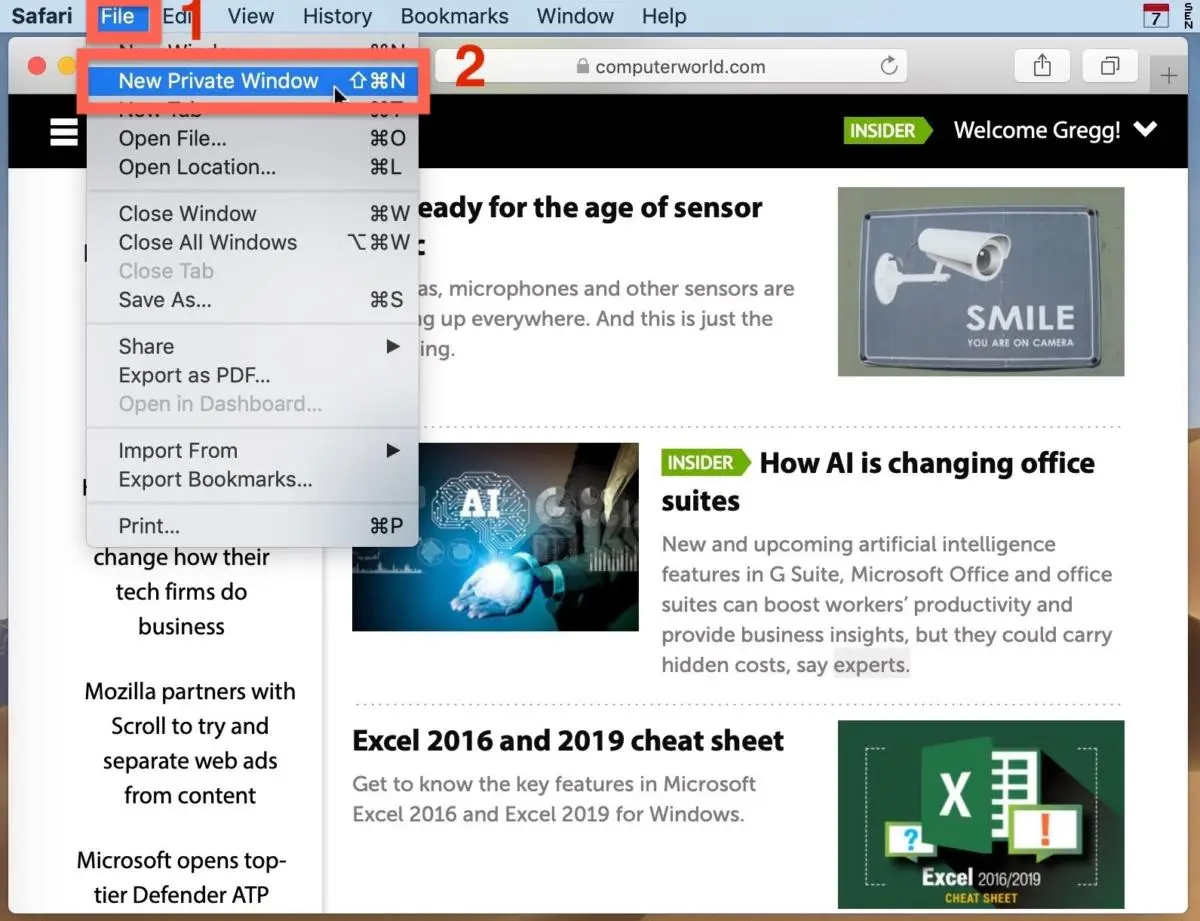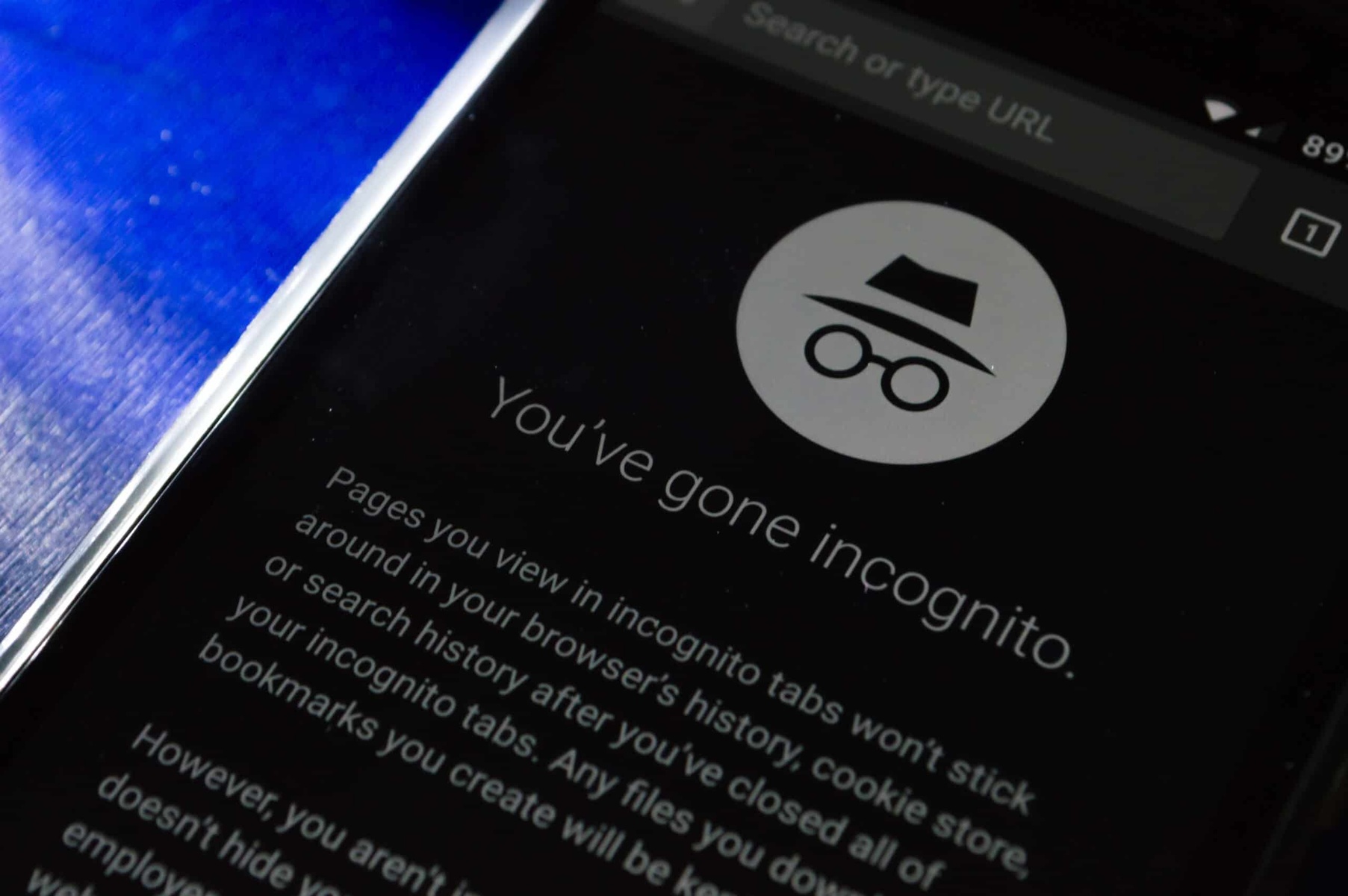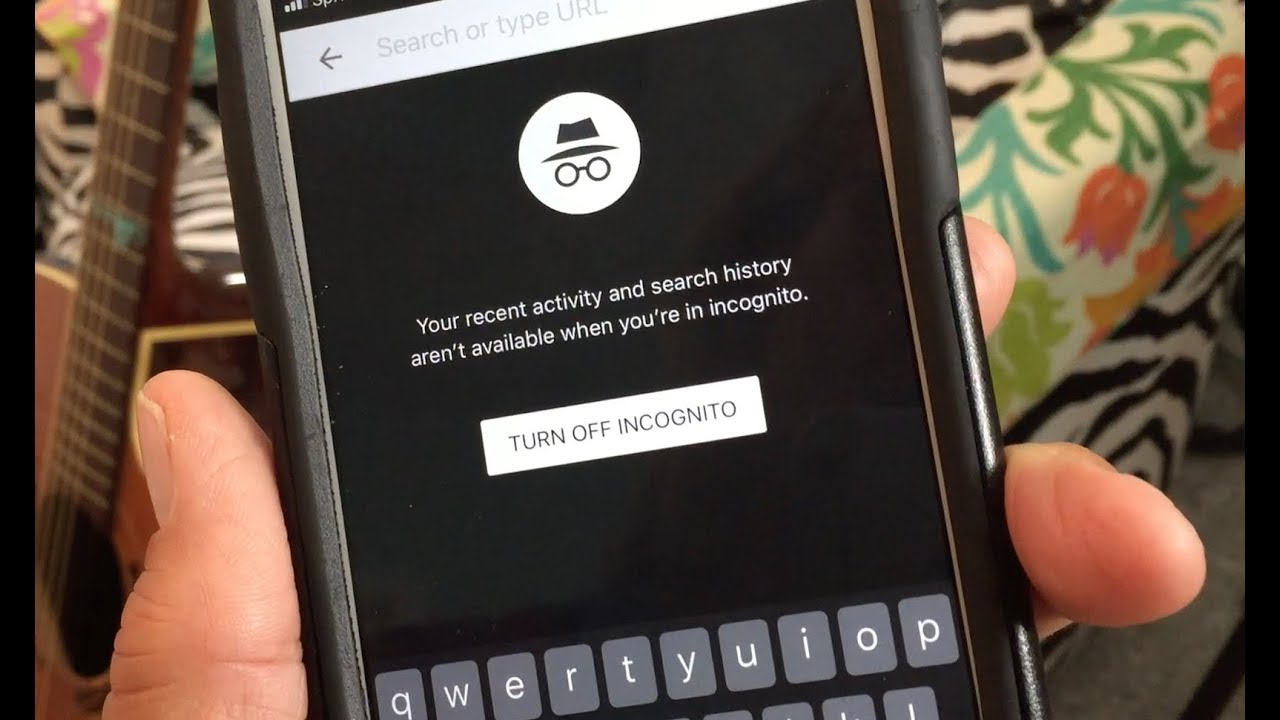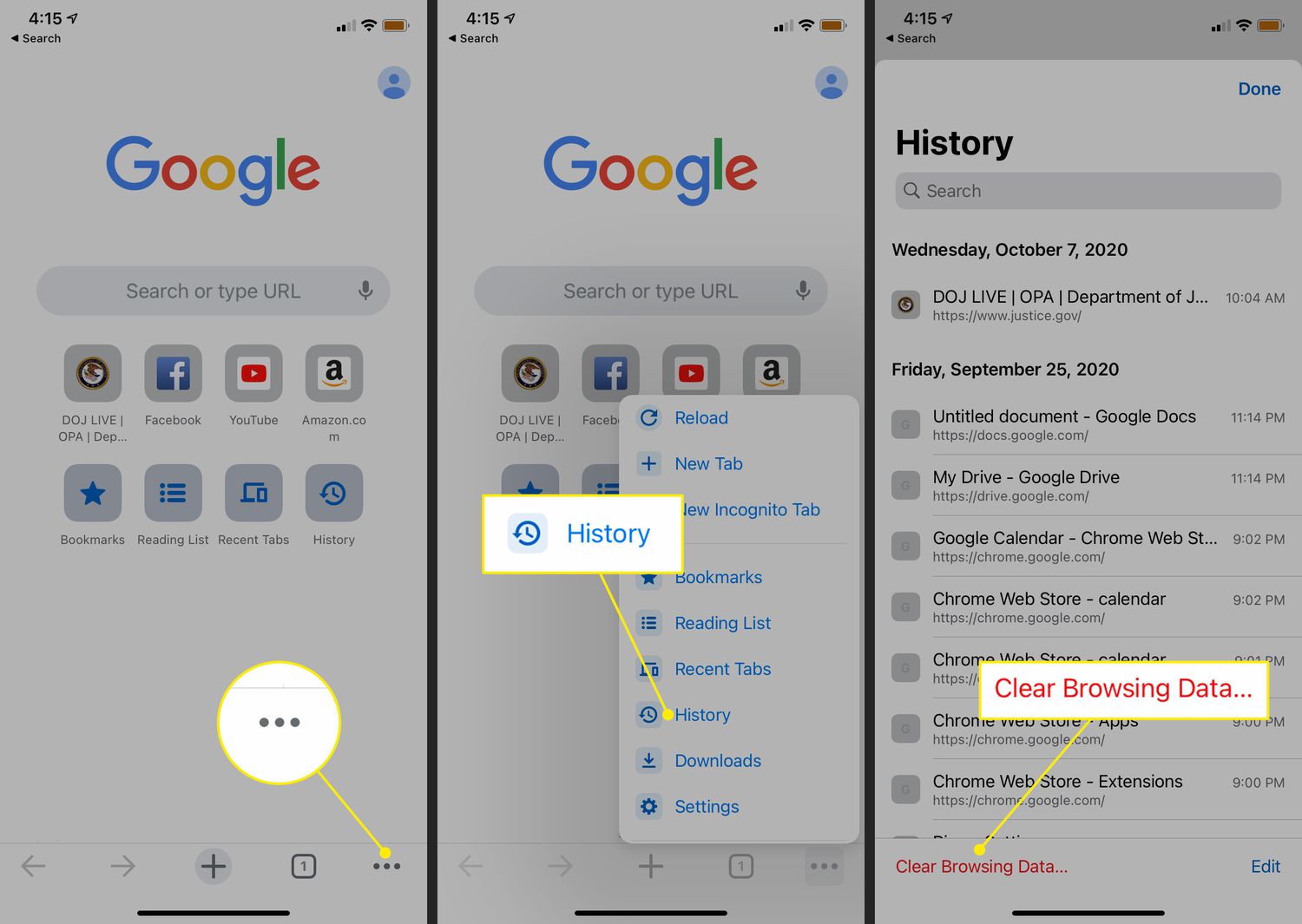Introduction
Welcome to the world of online privacy and anonymity! In this digital age, our smartphones have become an essential part of our lives, holding a plethora of personal information. Whether we’re browsing the web or using apps, our actions can be tracked, and our data can be collected. This is where incognito mode comes to the rescue.
Incognito mode, also known as private browsing or stealth mode, is a feature available on most modern smartphones. It allows you to browse the internet and use apps without leaving behind a trail of your online activities. When you activate incognito mode, your browsing history, form data, cookies, and other temporary files are not stored on your device. It’s like stepping into a secret world where your online footprint disappears once you exit the mode.
Why might you want to use incognito mode? Well, let’s say you’re planning a surprise birthday party for your friend and you’re doing some online research for gift ideas. You don’t want your friend accidentally stumbling upon your browser history and ruining the surprise. Incognito mode can help with that. Or perhaps you’re using a shared device, and you don’t want your personal information to be accessible to others. Incognito mode provides a temporary shield of privacy in these scenarios.
Now that you understand the concept of incognito mode, let’s dive into the specifics of how to activate it on your iPhone and Android device. In the following sections, we’ll provide step-by-step instructions for both platforms. But before we get into the technicalities, let’s explore some of the benefits and limitations of using incognito mode on your mobile device.
What is Incognito Mode?
Incognito mode is a privacy feature available on most internet browsers and smartphone operating systems. It allows users to browse the web and use apps without leaving behind traces of their activities, such as browsing history, cookies, and temporary files. When you activate incognito mode, your device creates a temporary session that does not save any data locally.
The primary purpose of incognito mode is to provide users with a level of privacy and anonymity while using their devices. It helps to prevent others from accessing your browsing history, personal information, and online activities. When you’re in incognito mode, your device does not save your search history, login credentials, or any data entered on websites or apps.
It’s important to note that while incognito mode can shield your online activities from being recorded on your device, it does not make you completely invisible on the internet. Your internet service provider (ISP), websites you visit, and network administrators may still be able to track your online actions. Additionally, incognito mode does not encrypt your internet traffic, so if you’re using public Wi-Fi, your data could still be intercepted by malicious actors.
The availability of incognito mode may vary depending on the device and browser you’re using. Most commonly, it can be found in the settings or options menu of your browser or operating system. When you activate incognito mode, a new window or tab opens with a distinct visual indicator, such as a hat and sunglasses icon or a black browser window.
It’s worth mentioning that while incognito mode provides a certain level of privacy, it does not guarantee complete anonymity. If you want to ensure maximum privacy and security while browsing the web, you may consider using a virtual private network (VPN) or other specialized tools that offer additional layers of protection.
Now that you understand what incognito mode is and its purpose, let’s explore how you can activate it on your iPhone and Android devices. In the next sections, we’ll provide step-by-step instructions to help you navigate your way to online privacy.
Why Use Incognito Mode?
Incognito mode offers several benefits that make it a useful feature to utilize in various situations. Let’s explore some of the reasons why you might want to use incognito mode on your smartphone:
- Private Browsing: One of the primary advantages of incognito mode is the ability to browse the internet privately. When you activate incognito mode, your browsing history, cookies, and other temporary files are not saved on your device. This can be particularly useful if you’re using a shared device or don’t want others to discover your online activities.
- Protection Against Tracking: Incognito mode helps protect you against certain tracking methods used by websites and advertisers. Your browsing history, cookies, and other data are not stored, making it more difficult for companies to collect information about your online behavior and serve you targeted ads.
- Testing Websites: If you’re a web developer or designer, incognito mode can be a valuable tool for testing websites. By using incognito mode, you can simulate a fresh browser session without any stored information, providing a more accurate representation of how a website appears to first-time visitors.
- Keeping Personal Information Secure: Incognito mode can help protect your personal information. When you enter sensitive data like usernames, passwords, or credit card details while in incognito mode, this information is not stored, reducing the risk of it being accessed by third parties.
- Researching Privately: Whether you’re planning a surprise gift for a loved one or researching sensitive topics, incognito mode allows you to conduct your online research without leaving a trace. This ensures your search history and browsing activity remains private.
While incognito mode offers these benefits, it’s important to keep in mind its limitations. Incognito mode does not secure your internet connection or protect you from malware and phishing attacks. It also does not make you completely anonymous online. If you require enhanced privacy and security, consider using additional tools like a VPN and exercising caution while browsing the web.
Now that you understand the reasons to use incognito mode, let’s move on to the practical steps of activating it on your iPhone and Android devices.
How to Go Incognito on iPhone
If you’re an iPhone user and want to go incognito while browsing the internet or using apps, follow these simple steps:
- Open the Safari browser on your iPhone. Safari is the default browser on iPhones, and it offers an incognito mode known as “Private Browsing.”
- Tap the icon resembling two overlapping squares at the bottom right corner of the screen to open a new tab.
- In the bottom-right corner of the new tab screen, tap the “+” icon to open a private browsing tab.
- A menu will appear, displaying options for “Private” and “Cancel.” Tap “Private.”
- Congratulations! You’re now in incognito mode on your iPhone. The interface will change to indicate that you’re browsing privately.
- You can now browse the internet or use apps without any data being stored on your device. Remember that while you’re in incognito mode, your browsing history, cookies, and temporary files will not be saved.
- To exit incognito mode, simply close the private browsing tab by tapping the “X” icon located in the top left corner of the screen.
It’s important to note that while Safari offers incognito mode for browsing, it does not extend to other apps on your iPhone. Each app has its own privacy settings, so be sure to familiarize yourself with those settings to ensure maximum privacy.
Now that you know how to go incognito on your iPhone, let’s explore the steps to activate incognito mode on Android devices in the next section.
How to Go Incognito on Android
If you own an Android device and want to go incognito while browsing the internet or using apps, here’s how you can activate incognito mode:
- Open the Google Chrome app on your Android device. This is the default browser for most Android smartphones and tablets.
- Tap the three vertical dots in the top-right corner of the Chrome window to open the menu.
- From the menu, select “New Incognito Tab.” This will open a new tab in incognito mode.
- Alternatively, you can directly access incognito mode by long-pressing the Chrome app icon on your home screen or app drawer. Then, tap “New Incognito Tab” from the pop-up menu that appears.
- A new tab will open, indicating that you’re now browsing in incognito mode. It will display a message informing you that your activity is private.
- You can now use this incognito tab to browse the internet or use apps without any information being stored on your device. Remember that while incognito, your browsing history, cookies, and temporary files will not be saved.
- To exit incognito mode, simply close the incognito tab by tapping the “X” icon located in the top right corner of the screen.
It’s important to note that while the Chrome browser on Android devices offers incognito mode, other apps on your device may have their own privacy settings. It’s advisable to check the settings within individual apps for additional privacy options.
Now that you know how to go incognito on your Android device, let’s move on to explore the benefits and limitations of incognito mode in the next sections.
Benefits of Incognito Mode
Incognito mode offers several benefits that can enhance your privacy and browsing experience. Here are some of the key advantages of using incognito mode on your smartphone:
- Privacy Protection: One of the main benefits of incognito mode is the protection it provides for your privacy. When you browse the internet or use apps in incognito mode, your browsing history, cookies, and temporary files are not stored on your device. This helps prevent others from accessing your personal information and online activities.
- Anonymous Browsing: Incognito mode allows you to browse the web and use apps without leaving a trace. Your actions are not linked to your personal account or browsing history, giving you a level of anonymity.
- Temporary Session: Incognito mode creates a separate and temporary session on your device. This means that any changes you make, such as logging into websites or adjusting settings, will not be stored once you exit incognito mode. This can be useful if you’re using a shared device and want to ensure that your information is not saved.
- Prevent Targeted Ads: Incognito mode can help reduce the number of targeted ads you see. Since your browsing history and cookies are not stored, advertisers have limited access to your online behavior, making it harder for them to serve personalized ads.
- Safe Testing Environment: If you’re a developer or designer, incognito mode can be a valuable tool for testing websites or apps. It allows you to simulate a fresh browser session without any stored data or custom settings interfering with the testing process.
- Researching Privately: Incognito mode is ideal for conducting research on sensitive topics or planning surprises. You can search for content without worrying about leaving a trace in your browsing history.
While incognito mode provides these benefits, it’s important to be aware of its limitations. It does not provide complete anonymity, as your internet service provider, network administrators, and websites you visit can still track your online activities. Additionally, incognito mode does not encrypt your internet traffic, so it’s important to use other security measures, such as a virtual private network (VPN), for enhanced privacy and security.
Now that you understand the benefits of incognito mode, let’s explore some of its limitations in the next section.
Limitations of Incognito Mode
While incognito mode provides a certain level of privacy and anonymity, it’s important to be aware of its limitations. Here are some of the key limitations of using incognito mode on your smartphone:
- Not Completely Anonymous: Incognito mode does not make you completely anonymous online. Your internet service provider (ISP), network administrators, and websites you visit can still track your online activities.
- Does Not Encrypt Traffic: Incognito mode does not encrypt your internet traffic. This means that any information you send or receive can still be intercepted by third parties, especially when using public Wi-Fi networks. To ensure secure communication, consider using a virtual private network (VPN) in conjunction with incognito mode.
- Does Not Prevent Tracking by Websites: While incognito mode can help reduce tracking by advertisers, it does not prevent websites from tracking your activities. Websites can still collect information about your visits and actions, including your IP address, browser type, and referring page.
- Does Not Protect Against Malware and Phishing: Incognito mode is not designed to protect you from malware and phishing attacks. It only prevents your browsing history and temporary files from being stored on your device. To stay safe online, it’s important to use reliable antivirus software and exercise caution when interacting with suspicious websites or emails.
- Not Universal Across Apps: While incognito mode is available in web browsers, it does not extend to other apps on your device. Each app has its own privacy settings, so it’s important to review the privacy options within individual apps for additional protection.
- Cannot Hide Your IP Address: Incognito mode does not hide your IP address, which is a unique identifier associated with your device. Websites and online services can still see your IP address, potentially allowing them to track your location and online activities.
Despite these limitations, incognito mode can still be a valuable tool for protecting your privacy and maintaining anonymity to some extent. It’s important to understand its capabilities and use additional security measures when necessary.
Now that you’re aware of the limitations of incognito mode, let’s address some common questions related to this feature in the next section.
Frequently Asked Questions about Incognito Mode
Here are answers to some common questions related to incognito mode on smartphones:
- Can I be completely anonymous in incognito mode?
No, incognito mode does not make you completely anonymous. It only prevents your browsing history, cookies, and temporary files from being stored on your device. Your internet service provider (ISP), websites you visit, and network administrators may still be able to track your online activities. - Does incognito mode protect me from viruses and malware?
No, incognito mode does not protect you from viruses and malware. It only prevents your browsing history and temporary files from being stored. To protect yourself from these threats, use reliable antivirus software and exercise caution when downloading files or visiting websites. - Can websites still track me in incognito mode?
While incognito mode can help reduce tracking by advertisers, websites can still collect information about your visits and actions, including your IP address, browser type, and referring page. Incognito mode does not prevent websites from tracking your activities. - Should I use incognito mode when using public Wi-Fi?
Incognito mode alone does not provide secure communication on public Wi-Fi networks. It’s recommended to combine incognito mode with a virtual private network (VPN) for encrypted and secure internet traffic. - Can I use incognito mode for all apps on my smartphone?
No, incognito mode is generally limited to web browsers. Each app on your smartphone may have its own privacy settings, so it’s important to review the privacy options within individual apps for additional protection. - Does incognito mode prevent my internet service provider (ISP) from tracking me?
While incognito mode prevents your browsing history from being stored on your device, your ISP can still track your online activities. If you want to enhance your privacy, consider using a VPN to encrypt your internet traffic and mask your online identity.
These are just a few of the frequently asked questions about incognito mode. It’s important to familiarize yourself with the features and limitations of incognito mode to make informed decisions about your online privacy.
Now that we’ve covered these FAQs, let’s wrap up our discussion on incognito mode.
Conclusion
Incognito mode is a valuable feature available on smartphones that allows you to browse the internet and use apps without leaving behind traces of your online activities. Whether you’re looking to protect your privacy, conduct sensitive research, or simply avoid targeted ads, incognito mode can be a useful tool in your digital arsenal.
Throughout this article, we explored the concept of incognito mode, its benefits, limitations, and how to activate it on both iPhone and Android devices. We learned that incognito mode offers privacy protection, prevents tracking by advertisers, and helps maintain anonymity to some extent. However, it’s important to note that incognito mode does not guarantee complete anonymity, protect against malware or phishing, and may not extend to all apps on your smartphone.
If you value your online privacy, it’s recommended to combine incognito mode with other security measures, such as using a VPN, practicing safe browsing habits, and being cautious with your personal information. These additional steps can help you further enhance your privacy and protect your digital footprint.
Remember, while incognito mode provides a layer of privacy, it’s crucial to stay informed about the latest privacy and security practices to ensure your online activities remain protected. By understanding the features, limitations, and best practices surrounding incognito mode, you can take control of your digital privacy and make informed decisions about your online actions.
So, the next time you want to browse privately, conduct research discreetly, or simply keep your online activities separate from your regular browsing, activate incognito mode on your smartphone and enjoy the benefits of a more private and anonymous online experience.










